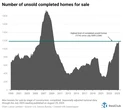Last week, Air France was the latest major airline to announce it will be moving its in-flight Wi-Fi to the Starlink network, offering it for free to members of its frequent flier program.
Starlink overtook a group of GEO providers, including Anuvu, Intelsat, Panasonic Avionics, and Orange Business, across a fleet of over 200 aircraft. The announcement comes just weeks after United Airlines also revealed it will be moving its in-flight connectivity service to Starlink across 2,500 aircraft.
Hippo dinner
With a robust network of 6,000-plus Starlink laser-linked satellites beaming down 200-350 Mbps connectivity to airplanes—compared to around 20 Mbps from GEO providers—Starlink has begun gobbling up major airline contracts, Hungry Hungry Hippos–style.
And a plus for consumers everywhere: Airlines are moving en masse to offer their Wi-Fi for free.
200 Mbps Wi-Fi offered for free sounds pretty good to me. What’s in it for the airlines? Is Starlink going for the sweep? What happens to the GEOs?
Why bless us all with free Wi-Fi?
JetBlue became the first airline to announce free Wi-Fi in 2017. Six years later, Delta followed suit. The domino effect is picking up seemingly unstoppable momentum, with United Airlines, Air France, Hawaiian Airlines, and Qatar Airlines recently announcing free service as well.
Once you go free . . .
Marques Brownlee, one of the biggest tech reviewers in the world, often emphasizes his number-one rule for monetization on the internet: Once a product is offered for free, it is very hard to get consumers to pay for it again. He ironically became a victim of his own rule when he released a paid iPhone wallpaper app last week and was subsequently ridiculed by the internet, which hates to pay for anything.
Sitting on a plane is unique in that it is a captive market, subject to the prices and offerings of an airline. But companies that decide to defy the free Wi-Fi movement risk the same consumer wrath that Brownlee faced.
Free and fast in-flight connectivity (IFC) is hitting a tipping point, and consumers will soon begin to expect it.
Airlines win, too
Free Wi-Fi is a fairly easy business decision for airlines as well. Long plane rides suck. They are boring and usually end with grumpy customers. The best way for airlines to pacify riders through a largely miserable experience is to stick an iPad in front of them and have them lose themselves to the time suck that is the internet.
Fastest flight ever
Hawaiian Airlines provides a good example. It recently began offering the Starlink service on its fleet of 42 Airbus planes. The company reports that customers often get 200-plus Mbps download speeds without capacity issues.
“We hear ‘the flight that went by so fast’ or ‘my kids were entertained and could play the game that they play at home,’” Hawaiian Airlines director of IFEC Evan Nomura told Payload.
All roads lead to free
In addition to the free Wi-Fi trends from other airlines and the more enjoyable consumer experience, Nomura also points to SpaceX’s standards as the reason for offering complimentary service. “When we signed up with Starlink, the only thing they offer is free.”
But in the airline business, nothing is ever truly free.
- Airlines average just 2.6% net profit or $5.44 per passenger per trip.
- Airlines protect those razor-thin margins like their liquidity depends on it.
The lost revenue by not making customers pay for Wi-FI and the roughly $25,000 per month Starlink charges for the service will likely end up showing in ticket prices. Although the pass-through price would likely be minimal, and the benefits of fast internet are a win-win for all parties.
Starlink going for the sweep?
Hawaiian Airlines had a unique problem before it announced it would be adding Starlink to its fleet of dozens of aircraft: The company wasn’t able to offer any in-flight connectivity since most of its flights are over the Pacific—a notoriously tricky region for satellites to cover due to the lack of land to plop ground terminals on and the minimal demand in the area.
Hawaiian Airlines says there was an RFP process for the IFC contract, but Starlink and their laser link satellites were the only ones who could truly solve the problem.
“We didn’t want to buy into a system that would be immediately outdated. And the thing with Starlink is that they assured us a constant investment in their network,” Nomura said.
Switch costs
Retrofitting a fleet to support Starlink terminals is expensive and has contributed to slow adoption among airlines. Starlink charges $150,000 per aviation terminal installation. The company is working to get installation time down to under one day.
With airlines always looking to one-up each other to attract the all-important premium consumer, Delta (currently using Viasat, Intelsat, and Hughesnet) and American Airlines (currently using Viasat, Intelsat, and Panasonic) are likely also looking at implementing Starlink.
Starlink grows and grows
SpaceX announced last week that its Starlink user base has grown to 4M customers, adding a staggering one million users in just the past four months (thanks, Starlink Mini).
The growth has primarily come from the consumer market, but aviation represents a growing, albeit limited market. There are fewer than 10,000 commercial aircraft in the US and fewer than 30,000 worldwide.
The company is looking to expand further by scooping up business aviation contracts, hoping to become the default service offered by all airplanes.
Checking in on GEO providers
GEO in-flight connectivity providers are finding themselves in a defensive posture, trying to safeguard their existing relationships and halt the hemorrhaging.
This week, Gogo announced it was acquiring its competitor Satcom Direct for over $600 million to avert the impending Starlink threat to their business aviation market.
Viasat—another key IFC provider—has seen its stock plummet nearly 90% since SpaceX launched its first operational satellites in May 2019.
Other LEO providers, like OneWeb and the soon-to-be-deployed Amazon Kuiper service, could offer a home Wi-Fi-like experience. New solutions like Astranis-built micro-GEO birds are also finding innovative ways to better IFC. However, given the high switching costs and the ultra-fast and high-capacity connectivity that Starlink provides, the service is beginning to entrench itself in our flying experience.
This story originally appeared on Payload and is republished here with permission.










No comments